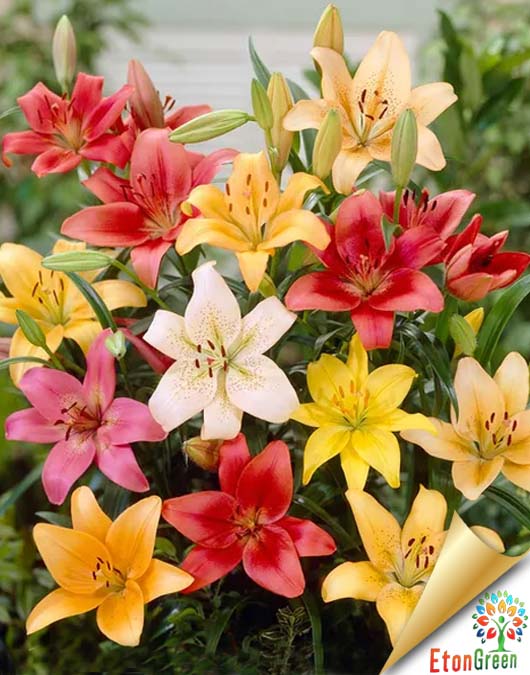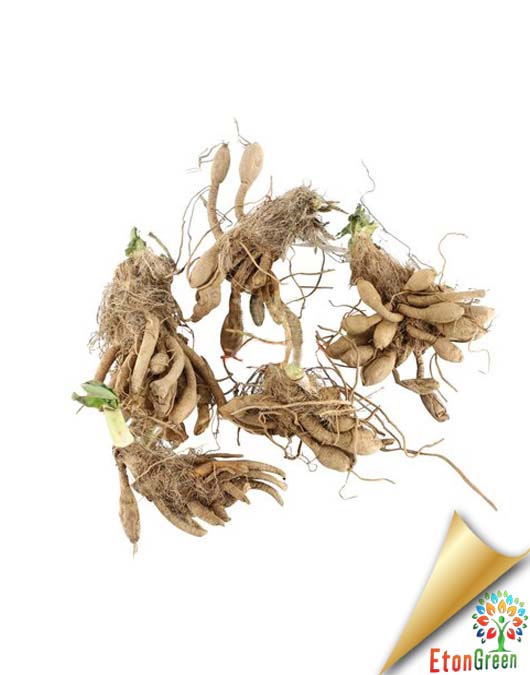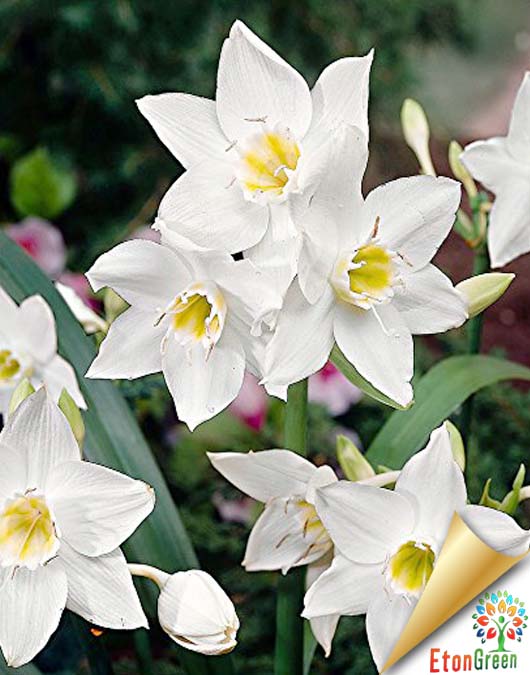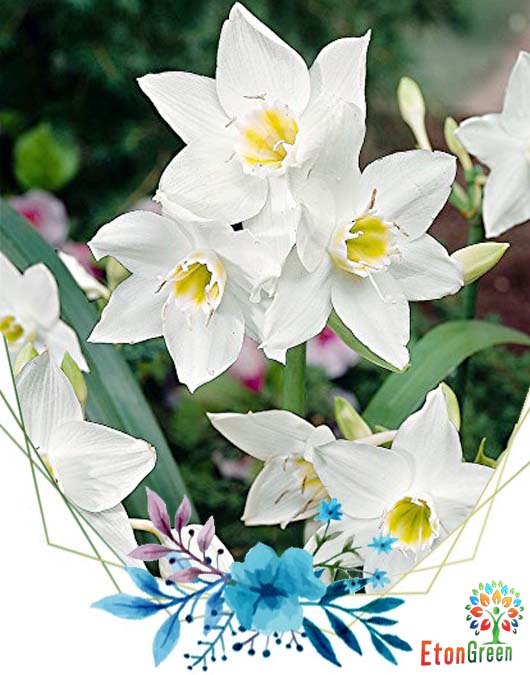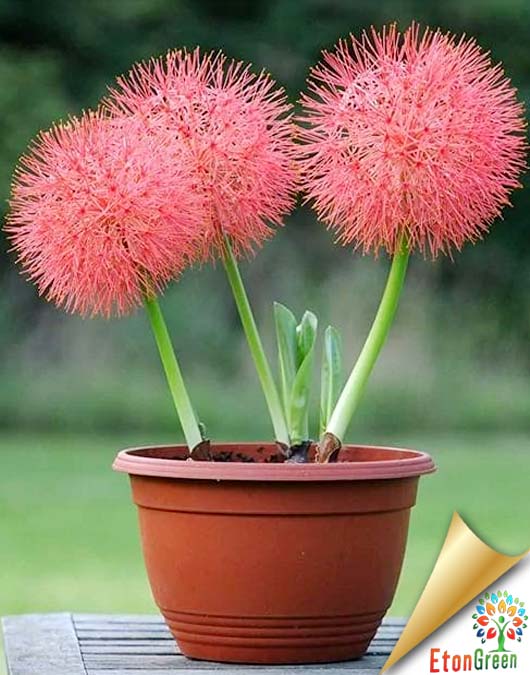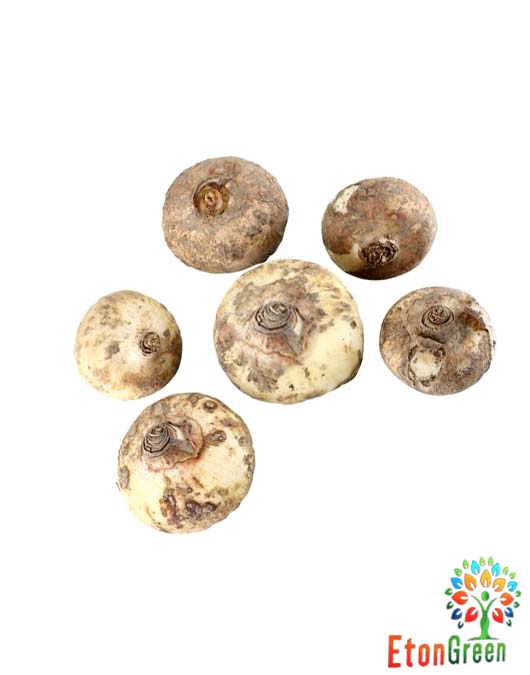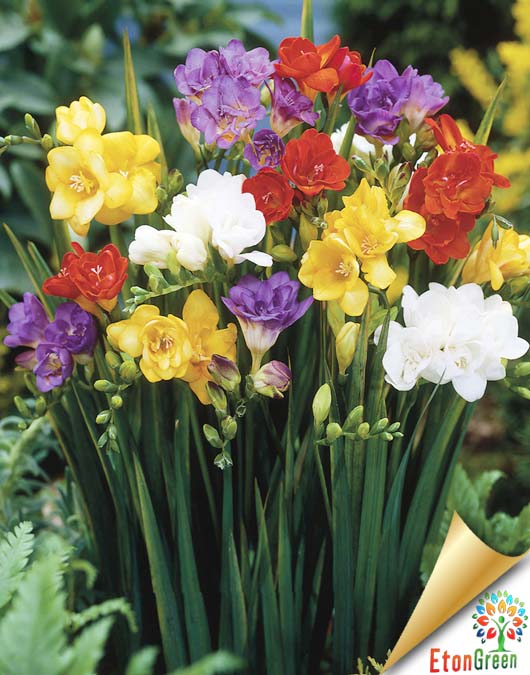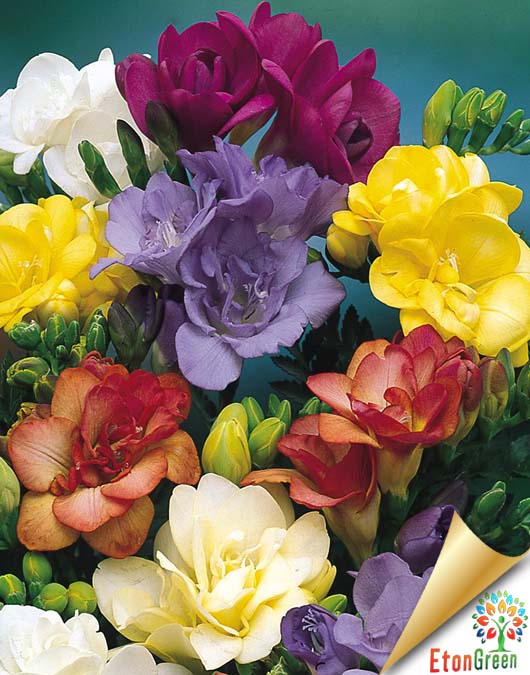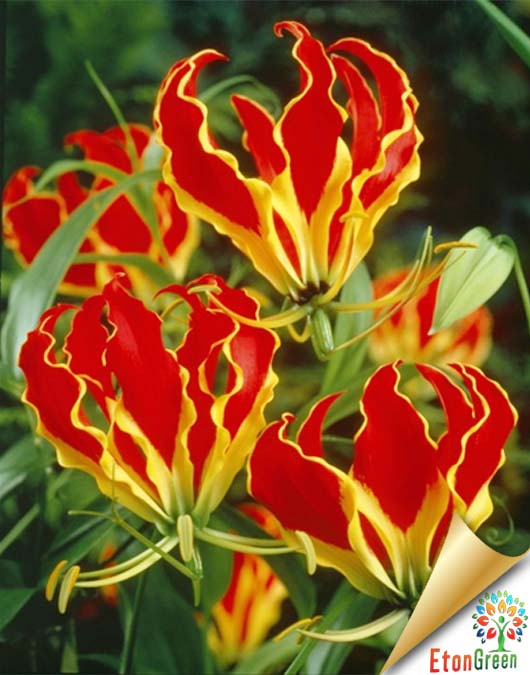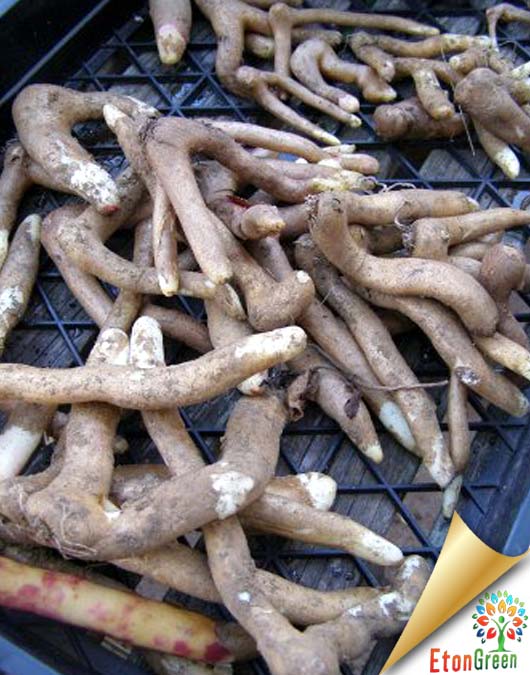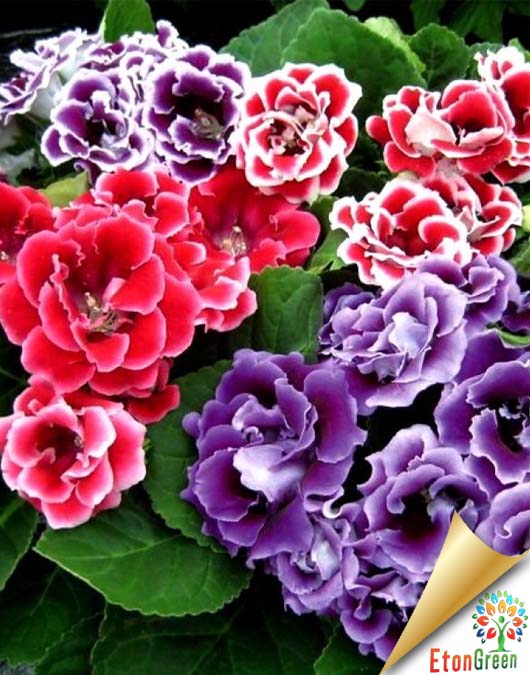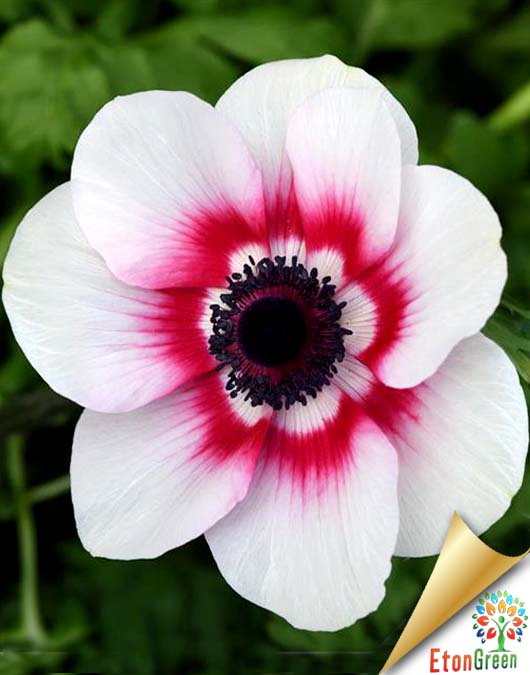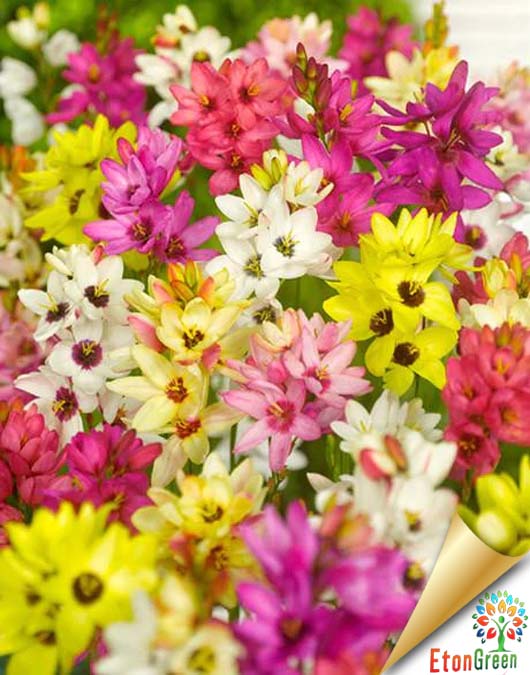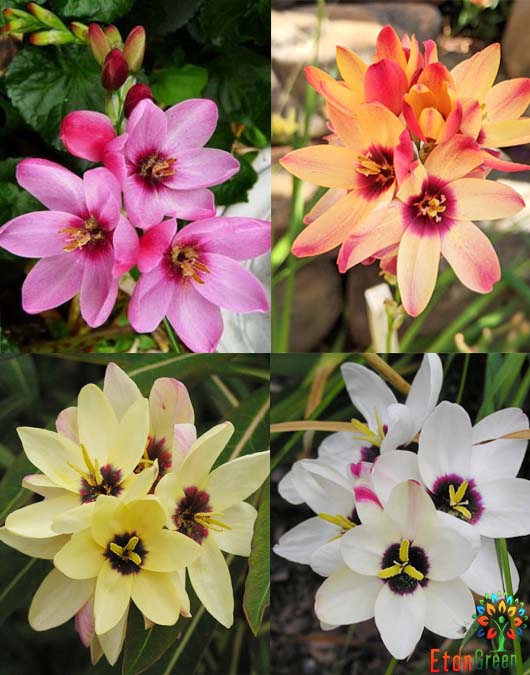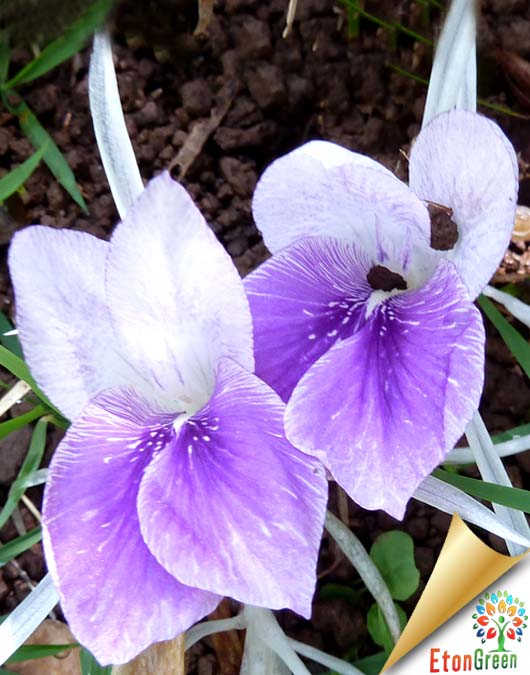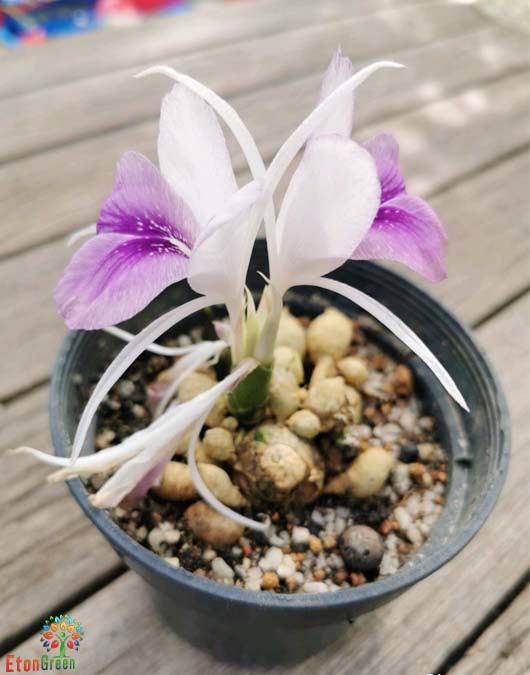- Shipping charge ₹ 90 for entire order
- Eucharis lily (Eucharis x grandiflora) is a graceful bulb that produces fragrant white flowers similar in shape to daffodils. It is native to South America which explains it’s other common name – the Amazon lily.
- A bulbous Amazon lily is a low growing bulb producing star-shaped clusters of white flower.
- Eucharis is a perennial with a bulb 2 to 6 cm in diameter. The stalked leaves are 20 to 55 cm long and 10 to 20 cm broad. Flowers are large, sweet-scented.
- It likes shade and sheltered areas and makes an excellent potted plant
- It can be planted in the garden
- Plant them with their necks slightly above the soil surface
- Plant in a normal potting compost and plant at 3 to 4 cm
- Propagations by offsets can be done in the spring
-
Sunlight Bright light, partial shade Watering Medium Soil Sandy loam soil, well-drained soil Temperature 15 to 30 degrees C Fertilizer Use any organic fertilizer Harvest Season Spring (Flower & Bulb)
Out Of Stock
EtonGreen Football Lily Pink Flower Bulbs (Set of 5)
- Shipping charge ₹ 90 for entire order
- Scadoxus multiflorus is the scientific name of football lily. This perennial grows from a rhizomatous bulb. It has a false stem as leaves are wrapped together. Leaves may appear after flowering or with them. A false stem can grow up to 60 cm.
- Football lily Bulb This name is a synonym of Scadoxus multiflorus (Martyn) Raf. Each plant will produce only one flowerhead in a season. Blood lily is a bulbous plant with leaves on short, speckled stalks. The flower stalk bears a rounded inflorescence, 8-12 cm across. The plant may live for many years and will flower annually indoors.
- Common Name- Football lily, blood lily, ball lily, blood flower, Katherine-wheel, oxtongue lily, poison root and powderpuff lily
- Scientific Name- Scadoxus multiflorus
- Watering- Medium
-
Caring for Haemanthus Multiflorus
- Pruning is generally not required, just remove the spent flowers.
- Bulbs may be planted outdoors directly in the garden in spring after last frost date.
- Reduce moisture in the winter season.
- Shipping charge ₹ 90 for entire order
- A wide range of colors and an alluring floral fragrance make freesia hard to resist. With up to eight trumpet-shaped, upward-pointing blossoms on leafless stems, freesias make delightful cut flowers that last a long time in the vase.
- The freesia bulb plant is easy to force indoors on sunny windowsills. Learning how to grow freesias in the garden and freesia flower care will allow you to enjoy these beauties year after year.
- Freesias bloom readily indoors. Plant the bulbs about 2 inches (5 cm.) apart in a pot filled with regular potting soil. Keep the soil moist, but not soggy, and place the pot in a sunny, preferably south-facing window. Expect flowers in 10 to 12 weeks.
- Once the flowers and foliage die back, allow the pot to dry out and place it in a cool location until you are ready to bring them into bloom again.
- Water well through the growing season but cut back during flowering time. Stop watering altogether once the foliage dies down and dries up. Do not over water because it will cause the corms to rot.
- Temperature: Keep Freesia refract plants in cool room with temperatures ranging between 16-18°C (60-65°F) and moderate humidity while they are growing and flowering. Blooms will last for weeks if kept at a maximum of 18°C (65°F). Freesia refract plants need a mild winter temperature of around 10°C (50°F).
- Fertilizer: A liquid fertilizer can be applied as soon as the first growth appears above ground.
- Shipping charge ₹ 90 for entire order
- Pick these easy-to-grow varieties for the best blooms. It is a rhizomatous herbaceous perennial plant, evergreen where rainfall and temperatures are adequate.
- It has large clumps of broad, arrow shaped dark green leaves up to 45 cm long.
- The inflorescences are large and are produced in spring, summer and autumn, with a pure white spathe up to 25 cm and a yellow spadix. The spadix produces a faint, sweet fragrance.
- Dig up the rhizomes in autumn, usually after the first frost and store for winter.
- Dig a hole about three times as deep as the height of the bulb.
- Set the bulb in the hole, pointy end up, then cover with soil and press firmly
- Space bulbs 8 to 10 inches apart
- Water thoroughly after planting
- Use the potting mix for bulb plantation as Garden soil + Compost + Perlite + Sand (2:2:1:1) Soil + Cocopeat + vermicomposting (2:1:2)
- Keep them adequately fertilized and watered, misting the plant every so often to keep the ambient humidity high
- They are susceptible to aphids so, take a look closely and apply insecticide.
- Shipping charge ₹ 90 for entire order
- Did you know that gloxinia can be grown as house plants? True! Gloxinia are fabulous gift plants AND can be spectacular house plants if you give them proper care.
- A few years ago, a gloxinia flowering houseplant (Sinningia speciosa) was considered a perennial. The plants would bloom and then die back. After a period of dormancy, the plant would regrow, delighting its owner with a fresh flush of big, velvety flowers.
- Todays gloxinias are hybrids that are bred to quickly produce a large number of blossoms. These gloxinias produce an outstanding display for about two months, but once the flowers fade, the plant rarely comes back because it invests all its energy into flowers rather than sturdy roots. Therefore, these plants are best grown as annuals, and since they are discarded after the bloom cycle, gloxinia flower care focuses on keeping the plant looking fresh while it is in bloom.
- Shipping charge ₹ 90 for Entire order.
- EXCELLENT CUT FLOWERS: These brilliant blooms are perfect for long-lasting cut flower displays
- DIVERSE: Anemones bloom in a brilliant range of colors and forms.
- EASY TO GROW: These bright flowers require little more than well-drained soil and plenty of sunlight to thrive.
- BRED FOR SUCCESS: These beauties were bred for success in garden beds and patio pots, with earlier and more prolific blooms.
- Special Care For Anemone.
- Before Planting : Deep The Bulb into Normal water during 30 Minutes to 45 Minutes.
- Soil: Mix The normal Soil with 30% of Coco Peat & 20% of Vermi Compost ,
- Planting : Bulb is already Medicine Treated , Plant the bulb in Pot One inch deep. There is no need of Water till Germination or a week.
- Shipping charge ₹ 90 for Entire order.
- 100% Imported and genuine product best quality flower bulbs
- Native to South Africa, this star-shaped flower symbolizes ‘happiness’ in the flower language. Our Ixia Flower Bulbs produce scintillating blossoms with beautiful spots and patches in the middle.
- Ixia is an exotic iris family member that creates bright flowers with contrasting spots and blotches. These South African natives thrive in the hot, dry climes of the southwest, but they may also be grown in other warm regions if planted beneath roof overhangs to keep water out while enabling the plants to get the full sun they need.
- For the finest visual impact, Ixias should be planted in groupings, borders, or pots; they also make excellent cut flowers. Flower bulbs are hardy, easy-to-grow cookies, but they despise having their feet wet: a bulb that is ‘bathing’ in water will decay in no time. So stay away from damp soil at all costs.
- Shipping charge ₹ 90 for entire order
- Kaempferia plant blooms the fragrant flowers. Its flower emerges straight from the ground, even before the leaves appear.
- Kaempferia is a stemless plant producing a pseudo stem with 2 to 4 erect leaves from an underground rhizome that has small tuberous roots. Flowering stems are produced from the rhizome when the leaves are not present. Flowers resemble small orchids or African violets but have just three petals.
- Water a plant when the soil feels dry to touch
- Water thoroughly in the summer and reduce watering for the winter & rainy season
- Try to water the plants in the morning around 8-10am
- You should remove dead, infected or damaged plant parts and throw in the garbage collector
- You should fertilize a plant mostly in the spring season, flower bud stage
- Plant season is in monsoon or autumn season
- Plant the bulb 3 inches deep and provide 3 to 4 inches of planting spacing
- The pointy part should face up
- Add some coarse sand or fine gravel to the soil to help improve the drainage Mulch the potting mix with organic material

